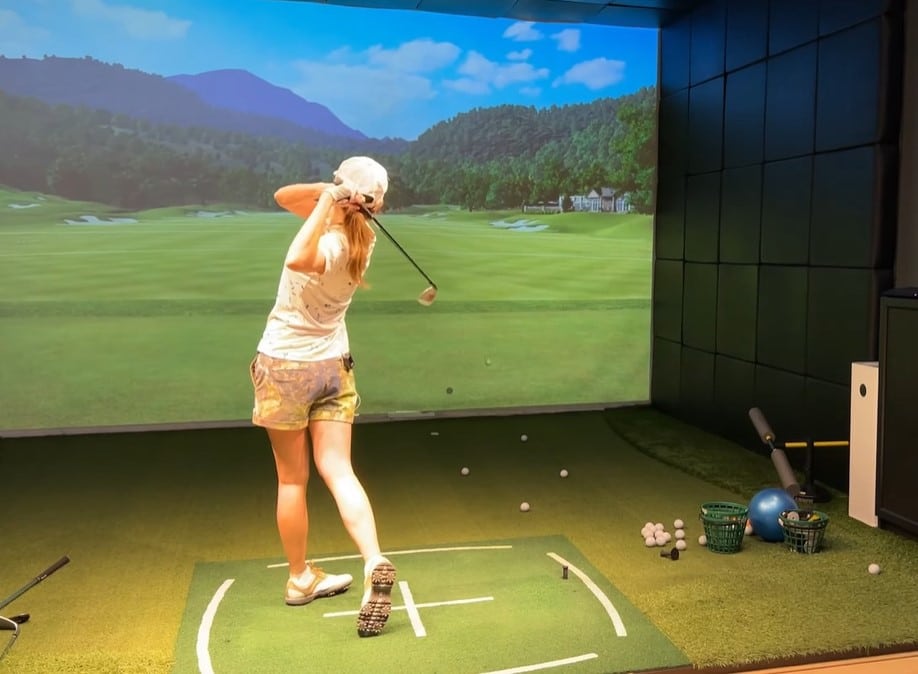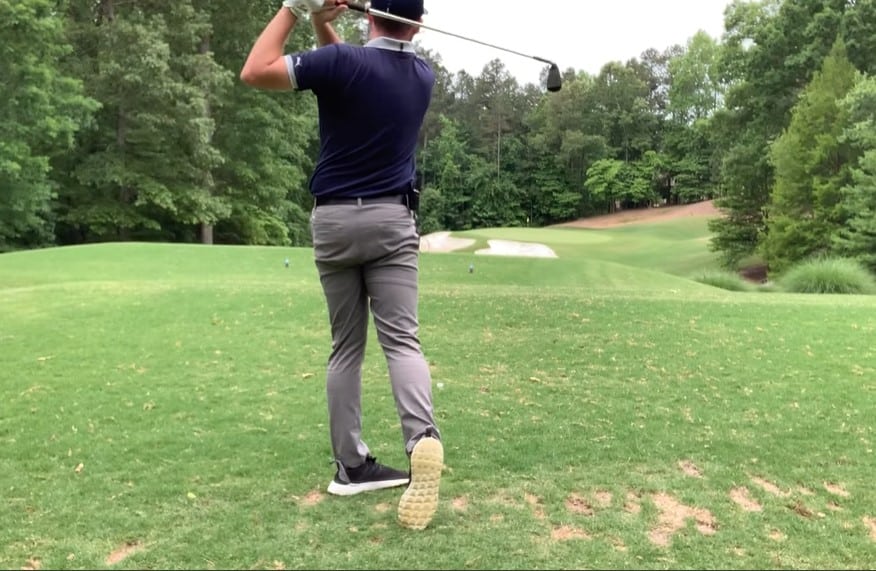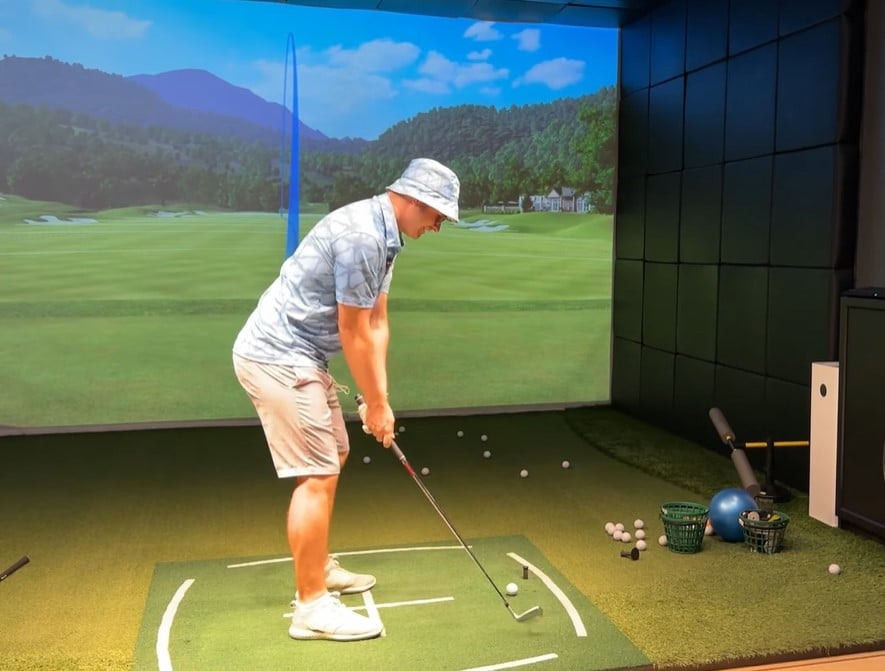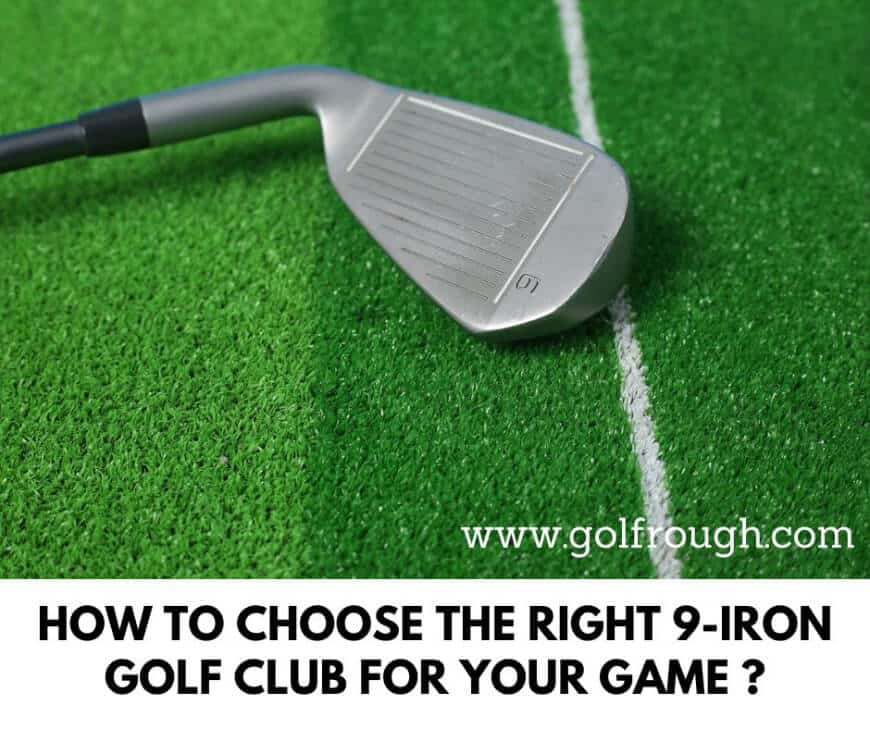Making a golf iron isn’t too easy, especially the 9-iron. Crafting this equipment for the best results would require extensive knowledge. These irons have to go through complex processes, which include different materials with precise measurements.
That is why most experts recommend buying them only from reputable manufacturers for the best results. There can be different types since there are different golf manufacturers, all using different methods and materials to make golf irons.
Continue reading the below to learn more about these 9-irons, how they are made, and what purpose they are used for.
What Is A 9-Iron Golf Club?

9-Iron is another kind of golf club used to hit shots on the green with a shorter approach. Being a short iron, it is perfect mostly for hitting only medium-distanced shots. Since it is highly versatile, it allows players to use them for hitting shots from different angles on different terrain types. So, if you want huge golf course advantages, these 9-irons can be your best bet.
Due to their shorter lengths, they are considered the most important clubs in the short clubs family. Moreover, they are always a favorite club to play high or soft shots from the obstacles. In addition to that, they come in handy to play controlled trials for tight spots. You can rely on them to hit an accurate and spin shot with full control over the greens.
Who Manufactures 9-Iron Golf Clubs?
Check out the below details to learn more about the manufacturers, their manufacturing process, and the quality control measures they adopt during the making.
Parent Company and Subsidiaries
Many companies make these 9-iron golf clubs. These include Callaway, Titleist, Mizuno, TaylorMade, and Cobra. All these manufacturers are very competent and use different processes and materials to manufacture their 9-iron golf cubs.
As for the subsidiaries, TaylorMade is currently a subsidiary of Centroid Investment partners, Mizuno is a subsidiary of Mizuno Corporation, Cobra Golf is a subsidiary of Puma, Titleist is a subsidiary of Acushnet Company, and lastly, Callaway is the Subsidiary of Top Golf.
Manufacturing Process
Each manufacturer has its unique manufacturing process to make 9-irons. Mostly these clubs are now made using the latest technological advancements to make better pieces. The more the manufacturer advances, the better the golf clubs will be. However, most small companies only make hand-made golf clubs to avoid higher manufacturing costs.
The steps involved in the manufacturing process start from forming the head using CAD software. Next, the shaft is formed, which includes various forming methods, and lastly, the assembly process and the polishing to finish the manufacturing.
Quality Control Measures
Once the manufacturing process is complete, each 9-iron golf club piece must undergo a quality control process. Each manufacturer uses quality materials and procedures to differentiate its products from the competitors.
They try to produce golf clubs with specifications that match the customer’s needs and satisfaction. Therefore, all golf club parts must undergo various quality checks to ensure the best results.
What Should I Use A 9-Iron for?

Since 9-irons are very versatile to use, therefore, their use depends upon an individual’s particular skill sets, playing style, and swing speed. However, the most common uses of these 9-irons include the following:
- They are good for the approach shots in the greens. If you want to hit a shot from 100 to 140 yards, a 9-iron can be an excellent choice.
- These 9-irons are wonderful for managing chip shots on the green, especially when you want to have the ball low and rolling.
- Next, they are a fantastic option when you intend to hit a high shot with a minimal roll and a shorter distance. Compared to other low-numbered irons, it comes in handy in hitting pitch shots due to its higher loft.
- These irons are also suitable for bunker shots to manage a medium-height shot.
- Most importantly, if you are in practice mode, these irons can help you practice shots for distance control and swings.
When Should You Use A 9-Iron?

In many situations, using a 9-iron can result better than using any other golf club. This includes when hitting a shot at the 100 to 140 yards distance. Due to the design of their club heads with shorter shafts, they are the best choice for short or medium-distance shots. Moreover, many golfers use them to hit a soft landing higher shot.
You can use these clubs to hit a shot closer to the green without having it roll over. Since it is a soft lofted iron, it still has a higher trajectory than the lofted irons. Moreover, their use is much more common with Par 5 and 4 holes. You may see their use in the 3 Par holes, but they are less common than the Par 4 or 5 holes.
Pros and Cons of 9-Iron
Below are a few pros and cons of a 9-iron golf club:
Pros:
- They are versatile and help in hitting a variety of shots easily.
- Since they have a higher loft, they allow better accuracy and control of a shot, even on the green.
- With good practice with these clubs, you can get better distance control.
- They are better for practicing and developing skills, especially for ball-hitting.
Cons:
- They are only suitable for shorter, or medium-range hits between 100-140 yards maximum.
- Even though it is versatile, it may not be best suitable for special-type shots like those with extremely low or higher angles and for spins.
- The windy condition can easily affect their shots due to their higher lofts.
- With longer holes that require maximum distance, these clubs may perform poorly.
Design of a 9-Iron Club
The design of a 9-iron includes the following:
Unique Features
The unique features of a 9-iron club include the following:
- It allows optimized performance due to its versatility.
- The loft is higher, which gives it an edge over the other lower-numbered irons.
- It helps in practice and skill development for shorter or medium-ranged shots with more ease and forgiveness in consistency.
- The versatile design and club head construction allow for better performance along with the use of different enhanced technologies.
Materials Used
Below are a few common materials used in a 9-iron club:
- The club head’s face is commonly made using carbon steel, stainless steel, and other materials. It may also feature polymer aluminum and other alloy materials. The body parts are usually made of forged or casted steel. The forged used is for increased precision with a softer feel, whereas the craft allows design and shapes complexity.
- The shaft is made of graphite and steel. The graphite shafts are best for golfers who prefer lightweight swings and distance hits. The Steel shafts are best for durability, consistency, and stability, although they are relatively heavier to hold.
- Next, the grip is made of rubber or synthetic materials for a comfortable and secure grip.
- The adhesives bond the shafts and club heads, ensuring a strong and durable connection.
Technological Advancements
Technological advancements will incorporate new manufacturing ideas into the manufacturing process. This includes the CAD and cavity back design to increase stability and reduce negative effects.
How to Hit A 9-Iron?

Hitting a 9-iron is easier and a vital part of a game. It requires taking your time and developing a technique.
Checkout the below techniques for better results:
Make Sure the Grip is Right
Having a correct grip is very important to hit a 9-iron. It would be best to have a secure and comfortable grip that shouldn’t be too loose or tight to ensure the best results. To ensure the best grip, make sure your hands are parallel. You can do that by practicing to have an ideal grip.
The Takeaway
Once you have managed a good grip, it is time to return to the club. The golf takeaway starts with your motion and a few feet behind the ball. It should be slow and low, and the 9-iron face must rotate naturally during the swing.
Finish the Backswing
Before completing the backswing, ensure the stance, takeaway, and setup are all in a good position. Once completed, take the 9-iron to the top of the swing. However, taking it past the parallel point once at the top of the swing is unnecessary.
Visualize the Impact Point and Duvet
This helps greatly in assessing the ball striking, so aim for a good spot on the club face. After the hit impact, watch the divot. It will continue with the target line with a proper downward strike. Keep up with consistency to improve the performance.
Finish Your Swing
Finishing a swing is important, and many handicapped golfers do not complete it. Finishing the swing helps keep the club moving and a low swing point. To be successful, make a few practices and finish the targets.
Read more: 10 Best Irons For 10-Handicap
How Far Should A 9-Iron Go?
A 9-iron hit should only go as far as between a 100-140 yards distance for a man.
What Degree of Loft is A 9-Iron
41 to 43 degrees is the standard loft of a 9-iron. But with game improvements, they can go to 37 degrees too.
9 And 3-Iron, What is the Difference?
With a higher loft, a 9-iron is best for shorter approaches between 41-43 degrees. The 3-irons are best for longer-distance shots in the 180-200 plus yards range.
Pitching Wedge Vs. 9-Iron?
A pitching wedge has a low loft, which makes it a good choice for controlled shorter shots with accuracy. A 9-iron, on the other hand, is more versatile with a higher loft. It is best suitable for mid-ranged shots to land smoothly on the greens.
FAQs
Yes, chipping with a 9-iron is possible, especially when you want to keep the ball lower to the ground. However, it is important to remember that a 9-iron has a relatively high loft, so it may not be the best club for chipping if you need to get the ball up quickly. A pitching wedge or sand wedge would be better choices for these types of shots.
Determining which golf club you should use depends on your specific needs and expertise. If you are a beginner, a 9-iron may be a better choice for you because it is easier to hit. However, if you are an experienced golfer and you need to hit the ball a long way, a hybrid may be a better option. Hybrids are designed to combine the features of an iron and a wood, so they can provide more distance and forgiveness than a traditional iron.
You can hit a 9-iron from a variety of distances and lies. It is a versatile club that can be used for a variety of shots. However, it is most commonly used for short approach shots to the green. You can also use it for chipping and pitching, as well as for longer shots from the rough or the fairway.
It depends on individual skills whether it is easy or hard to hit a 9-iron. For beginners, it can be a challenging club to hit because it has a relatively high loft. However, with practice, most golfers can learn to hit a 9-iron consistently and accurately.
· Stand with your feet shoulder-width apart and your knees slightly bent.
· Grip the club with your hands slightly ahead of the center of the grip.
· Position the ball slightly back in your stance, about in line with your left heel.
· Make a smooth, controlled swing and follow through.
· Practice hitting 9-iron shots from a variety of distances and lies.
Conclusion
The 9-iron golf clubs are highly versatile and used by most golfers in different game situations. It allows for better control with accuracy and controlled shots in medium-range runs. Most importantly, they will enable rookie golfers to master any skill with proper practice.
Ultimately, it is important to carry them along every time you head out for a play and ensure to use them as well. Over time, it can make you perfect at hitting powerful and accurate shots in no time.
Read more: Why Do I Hit My 5-6 And 7 Irons The Same Distance? Know The Truth!
Matt Stevens is the founder of Golfrough.com. He holds a Postgraduate in Sports Marketing and has played golf since he was four years old. Having experienced every high and low golf has to offer, his writing helps the average golfer avoid the mistakes he has made in 28-years on the course.

